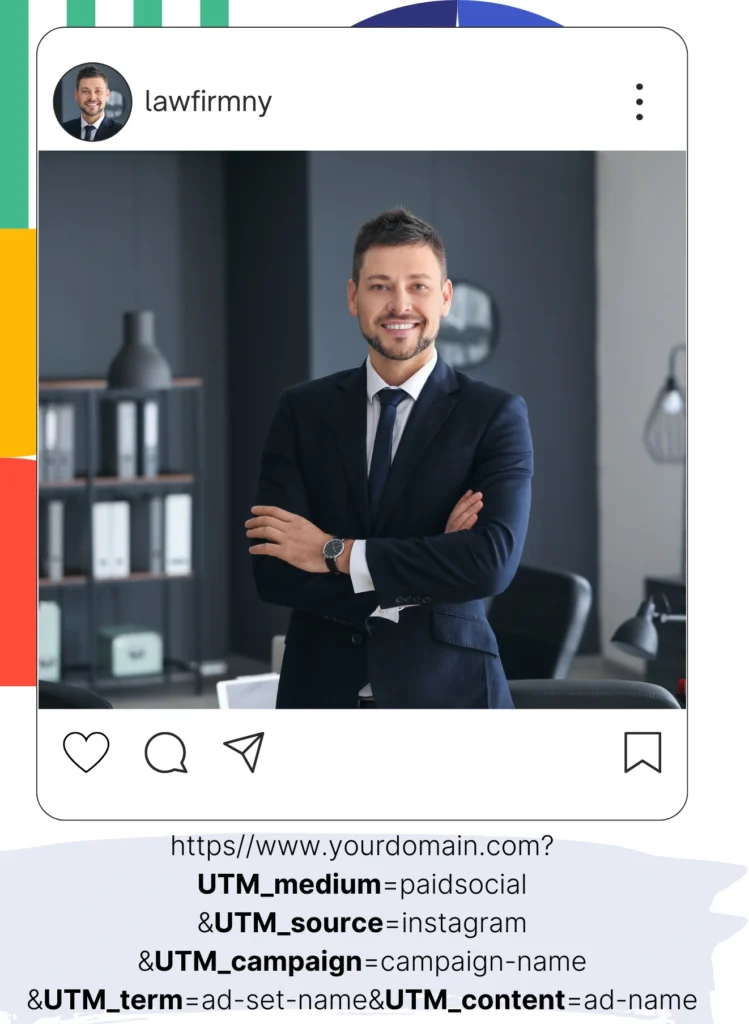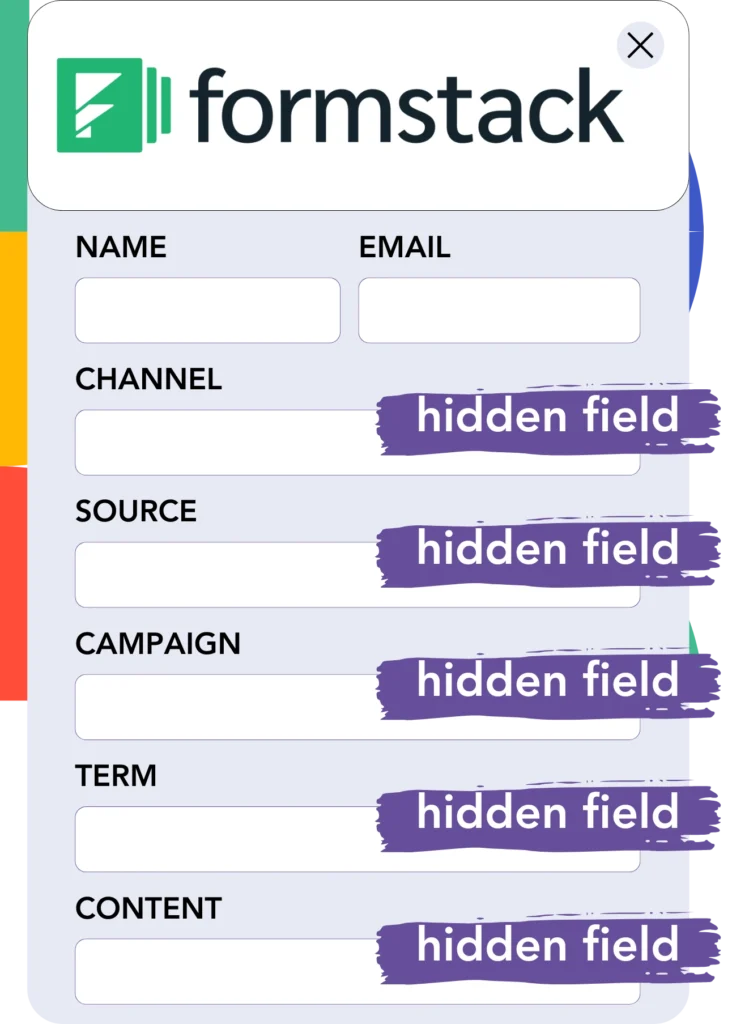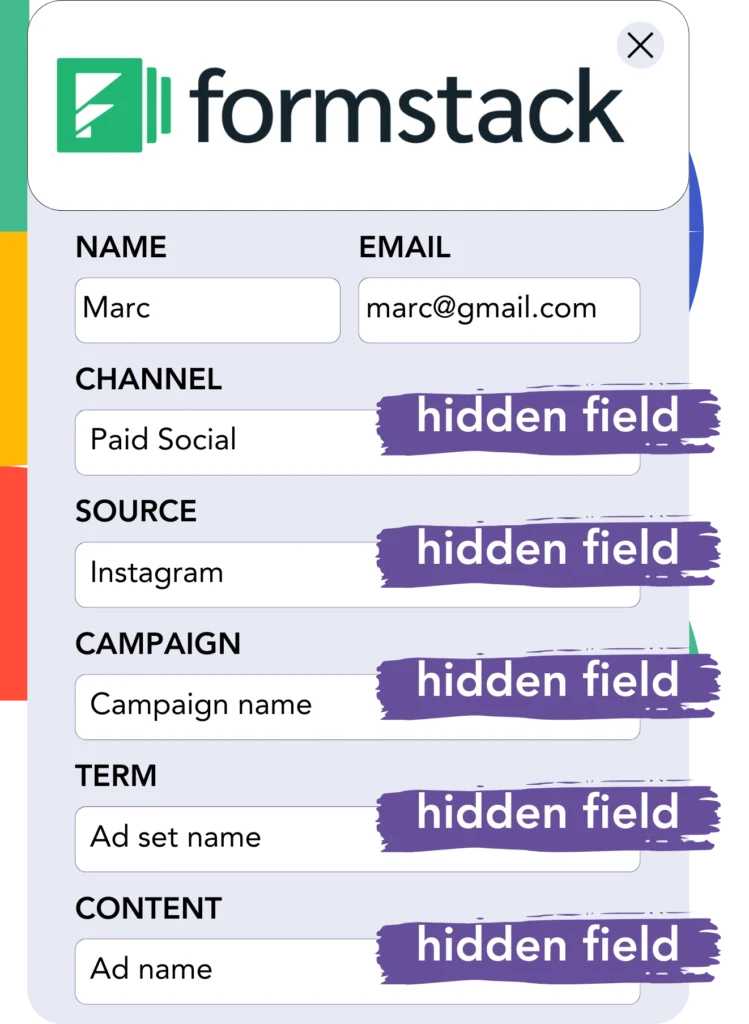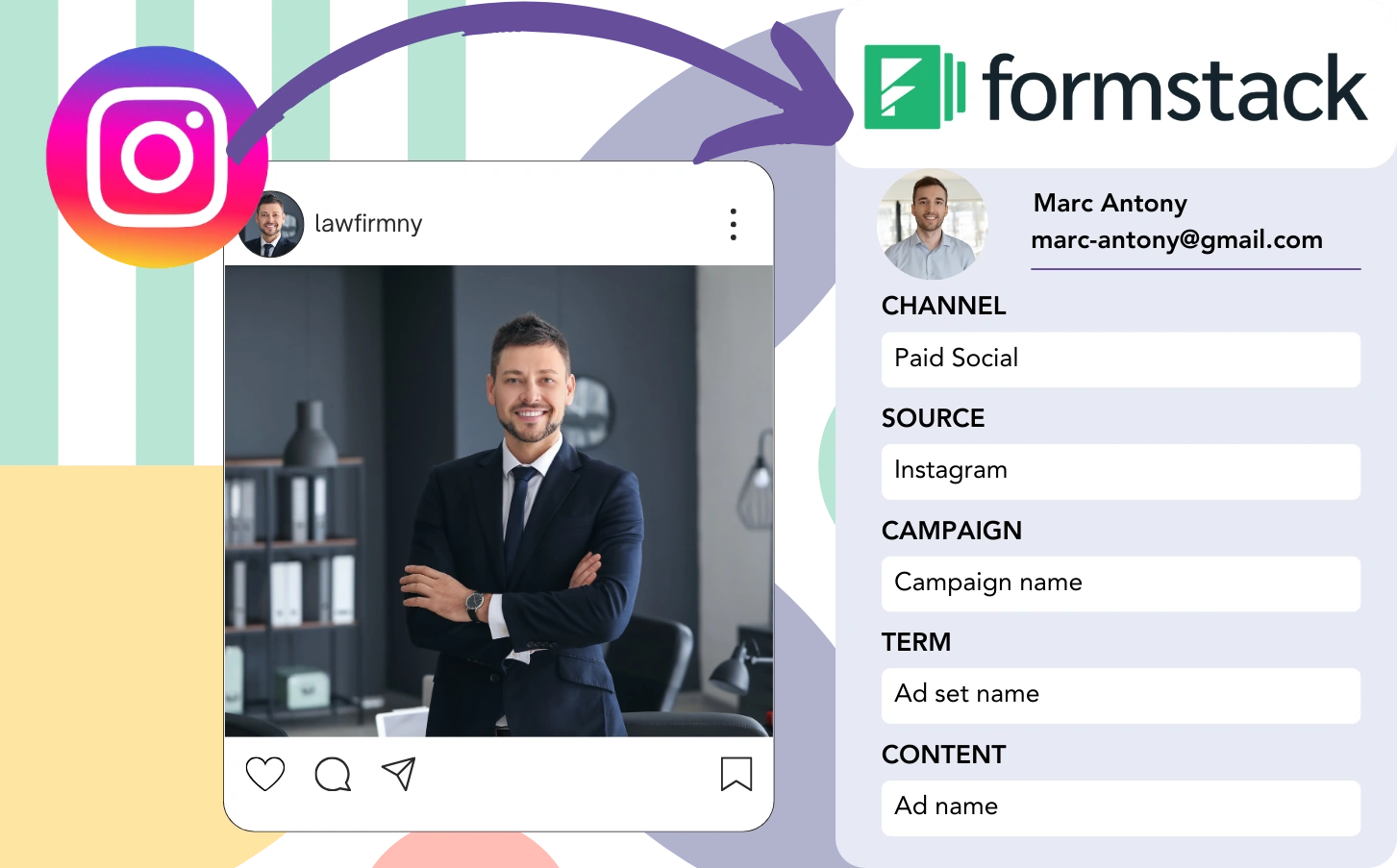Through Formstack, Instagram leads are collected, though it’s not possible to match them with a particular ad. Similarly, when a lead converts into a customer, you can’t trace them back to the exact ad.
The absence of tracking makes it difficult to evaluate your Instagram ads success, leaving you uncertain about which ads bring in leads and customers. Consequently, you’re investing in several ads without knowing which ones convert.
There’s a reliable way to link each lead back to the particular Instagram campaign, ad set, and ad where it was generated.
We’ll approach this one step at a time!
How to track Instagram ads in Formstack
Step 1: Add Leadsources in the head tag of your website

Leadsources is a simple way to monitor the sources of your leads. When implemented on your site, it records up to 7 data points per lead generated.
➡️ Sign up to Leadsources.io for free
➡️ Add the Leadsources tracking code to your site
Step 2: Add the UTM parameters to your Instagram ads

Add UTM parameters to your URL to track details like the Instagram campaign, ad set, and ad. Here’s a sample setup:
UTM_medium=paidsocialUTM_source=instagramUTM_campaign=campaign-nameUTM_term=ad-set-nameUTM_content=ad-name
The final URL should look like this:
https://www.yourdomain.com?UTM_medium=paidsocial&UTM_source=instagram&UTM_campaign=campaign-name&UTM_term=ad-set-name&UTM_content=ad-nameKeep in mind: Leadsources records every lead source, whether UTM parameters are present or not, for complete tracking.
Step 3: Add the hidden fields in Formstack

Hidden fields are fields on a form that users don’t see, but they store data included in the form submission.
When your Formstack is submitted, Leadsources automatically inputs Instagram ads data into the hidden fields. This data is then saved directly in your Formstack.
Step 4: Capture the Instagram ads data in Formstack

When users click your ads and get to your site, Leadsources fetches the Instagram campaign, ad set, ad data, and other relevant information.
Leadsources populates the hidden fields of Formstack using the Instagram ads data.
Thus, when the form gets submitted, you have the option to check the Instagram ad data and lead details in Formstack.
How does Leadsources work?
Whenever someone arrives at your site, Leadsources fetches Instagram ad data and populates it within the hidden fields of your form. Upon submission, this data, along with lead details such as name and email, is transmitted to Formstack.
Leadsources tracks every bit of this source data for each lead:
| Lead source data | Fetched automatically |
| Channel | ✅ |
| Source | ✅ |
| Campaign | ✅ OR use UTM_campaign |
| Content | UTM_content parameter is required |
| Term | UTM_term parameter is required |
| Landing page | ✅ |
| Landing page subfolder | ✅ |
As presented in the table above, when UTM parameters cannot be applied—like with organic sources such as Google search or referral traffic—Leadsources captures some lead source data:
- Channel
- Source
- Campaign
- Landing page
- Landing page subfolder
Unlike other platforms, Leadsources gathers lead source data across every marketing channel, whether organic or paid.
Performance reports: Lead, sales, and revenue by source
By evaluating Instagram ad data in Formstack, you can create performance reports such as:
- Leads, sales, and revenue by channel
- Leads, sales, and revenue by source
- Leads, sales, and revenue by campaign (aka. Instagram campaign)
- Leads, sales, and revenue by term (aka. Instagram ad set)
- Leads, sales, and revenue by content (aka. Instagram ad)
This allows you to adjust your Instagram budget based on the campaigns, ad sets, and ads that bring in the highest leads, sales, and revenue.
Let’s take a closer look at some of the reports you can formulate:
1. Lead source reports
Design performance reports that show the number of leads derived from:
- Channel
- Source
- Campaign (aka. Instagram campaign)
- Term (aka. Instagram ad set)
- Content (aka. Instagram ad)
- Landing page
- Landing page subfolder
Example #1: Leads by channel
This report is useful for determining the channel that attracts the most leads.

Example #2: Leads by Instagram campaign
You can now concentrate your analysis on a particular lead source (e.g., Instagram) and track the leads from each Instagram campaign.

Example #3: Leads by Instagram ad
When you determine the Instagram campaign that generates the highest volume of leads, you can investigate which specific ad set or ad contributes to that success.

2. Sales and revenue source reports
With clarity on which Instagram campaign, ad set, and ad are generating our leads, we must analyze if these leads are turning into sales and revenue.
To realize this, integrate your leads with a CRM like GoHighLevel. This allows you to track sales and revenue from multiple channels, sources, Instagram campaigns, ad sets, ads, landing pages, and landing page subfolders.
Utilizing this data allows you to modify your Instagram ad strategy to focus on the channels, sources, campaigns, ad sets, and ads that yield the best sales and revenue.
You can create a variety of sales and revenue reports, for instance:
- Sales and revenue by channel
- Sales and revenue by source
- Sales and revenue by campaign
- Sales and revenue by term (e.g., Instagram ad set)
- Sales and revenue by content (e.g., Instagram ad)
- Sales and revenue by landing page
- Sales and revenue by landing page subfolder
Example Scenario:
| Channel | Search Paid | Social Paid |
|---|---|---|
| Leads | 50 | 75 |
| Sales | 5 | 6 |
| Average Order Value | $150 | $100 |
| Revenue | $750 | $600 |
Once ads were launched on Google and Instagram, the first “Leads by Channel” report indicated that Social Paid ads (Instagram) secured more leads than Search Paid ads.
Nevertheless, after evaluating the sales and revenue data within your CRM, you discovered that the Search Paid channel yielded a higher revenue figure with fewer leads than the Social Paid channel. This insight led you to modify your budget to provide more support to the Search Paid channel.
LeadSources tracks the source of each lead in Formstack, whether they come from ads, organic search, social, email, etc. and syncs that data with each submission. See the full breakdown on the lead source in Formstack page.

